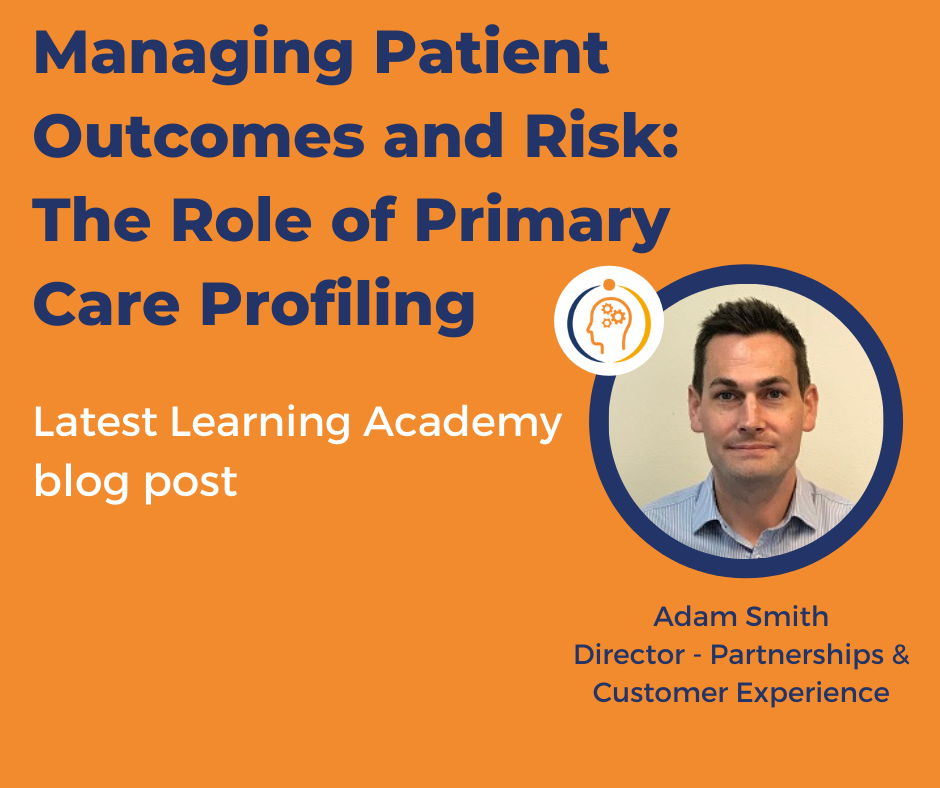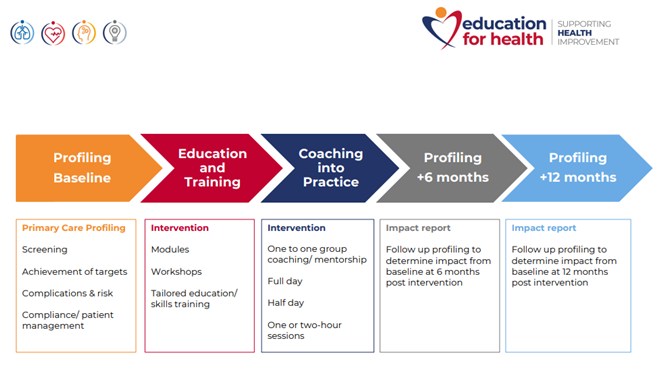4th November 2021
In this third blog post, Adam Smith, our Partnerships and Customer Experience Director, discusses his experience of using Primary Care Profiling Tools to improve patient outcomes.
With the NHS continuing to feel the strain of Covid-19, seasonal flu and the ongoing demands of managing long term conditions, it is more important than ever to prioritise, focus, and operate intelligently. Working through backlogs and prioritising patients in an informed way is, and will continue to be, critical to providing the right care at the right time. Primary Care Profiling can play an important role in this process of focussing resources and effectively managing patient outcomes.

What is Primary Care Profiling?
Profiling Tools offer a quick and easy way to prioritise patient care, monitor progress in patient outcomes, and evaluate the impact of an intervention or approach both within a single practice and across a health network/system. They deliver an accurate snapshot of a LTC population and those at risk of exacerbations and complications, enabling healthcare professionals to carefully tailor their approach to groups of patients. The tools produce real-time concise reports to highlight up-to-date patient outcomes and can be compared across a geography to identify best practice.
The reports show which groups would yield the most significant results if targeted for intervention, e.g. those patients with modifiable risk factors and those at risk of developing a long term condition. In this way the tools can be used to improve health outcomes and achieve QoF targets. Progress in key areas can be measured by subsequently re-running the profiling tool at agreed dates; typically, 6 and 12 months after the first profiling exercise.
How do the tools work?
A coded search is uploaded into the practice clinical system: this does not require additional software and takes no longer than 15 minutes to run. Unidentifiable data is then converted into a practice profile that can be aggregated up to PCN, CCG, or ICS profiles, and a few key areas where improvements could be achieved are recommended. The profiles can be used in conjunction with further support such as best practice modelling, one to one or group coaching, and/or training and education tailored to address the areas highlighted in the profile(s), as outlined in the diagram below.

Click here to download the Profiling Tools diagram as a PDF
What is the impact?
Having run these profiling tools in over 200 practices myself, I have seen how their simplicity in application and interpretation have meant that they have made a real difference to patient care and the numbers of individuals achieving targets and improvements in outcomes.
The tools can be used to compare data from a baseline over a period of time. In one practice, use of the diabetes profiling tool over a 15-month period identified patients at risk of poor control, enabling timely intervention and a subsequent significant increase in the numbers achieving all three of their key targets. At the end of the profiling period 128 more people had achieved their blood pressure targets, 63 more their cholesterol target, and 58 more their HbA1c target.
Similarly, when used across a whole CCG for a 12-month period, the number of people receiving at least one of their key checks increased by almost 800, those achieving their HbA1c target by over 500, and those achieving all three targets by over 300.
Profiling Tools at Education for Health
Here at Education for Health, we are in the process of developing our own suite of profiling tools, designed to support patient outcomes in Asthma, COPD, Diabetes, CVD, and Obesity. If you would like to know more, please register your interest here and a member of the team will be in touch.
Previous blogs

